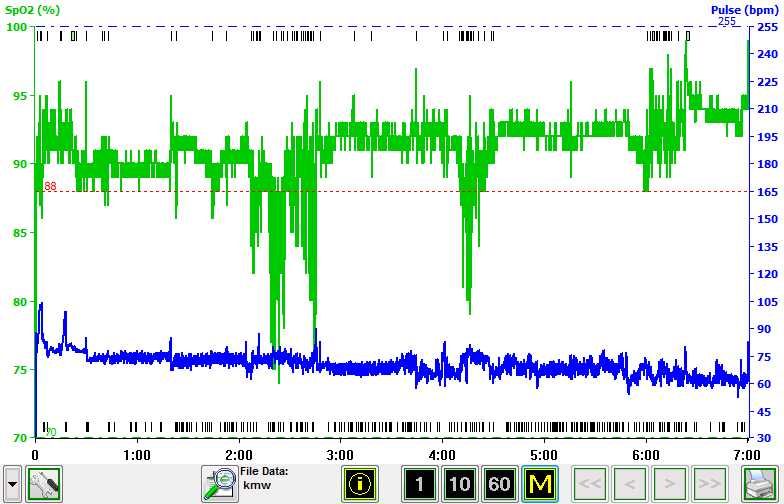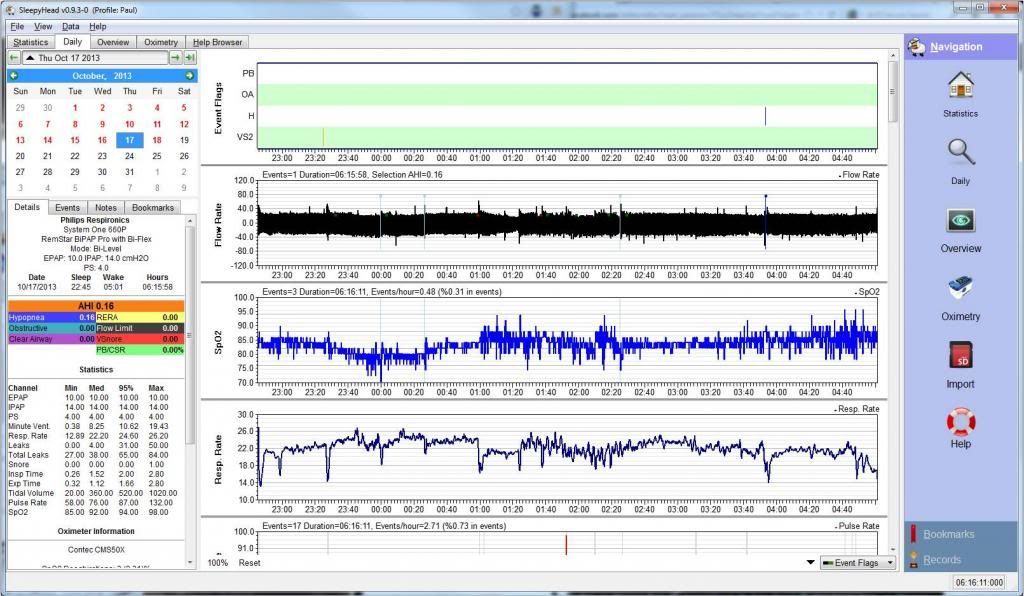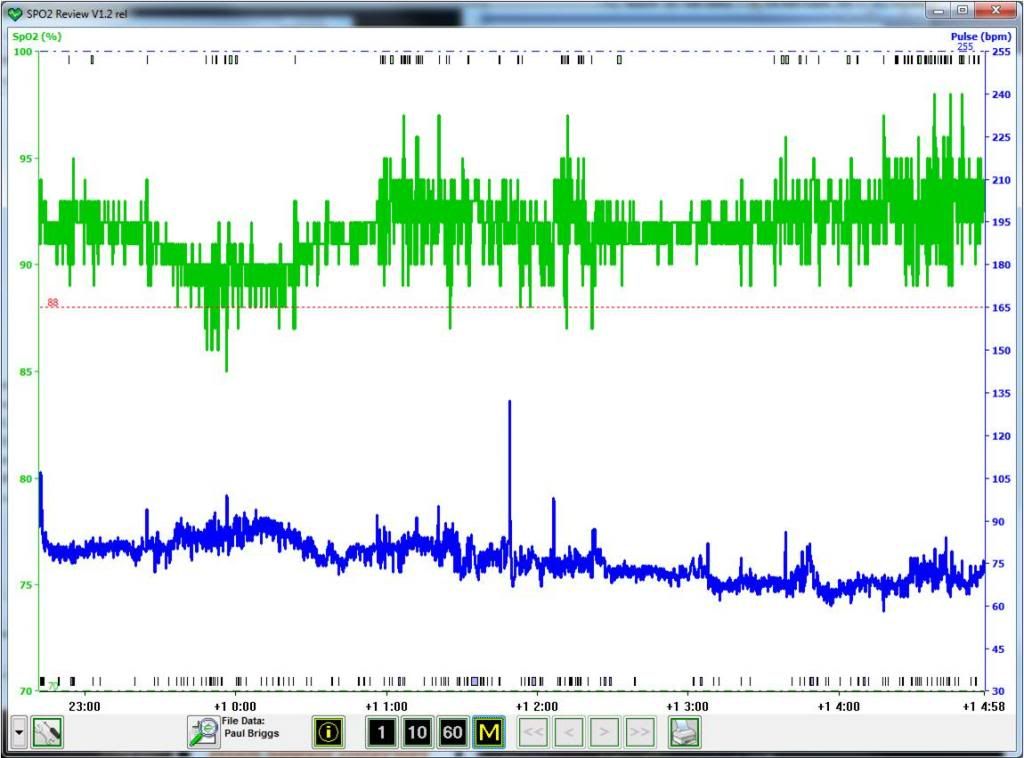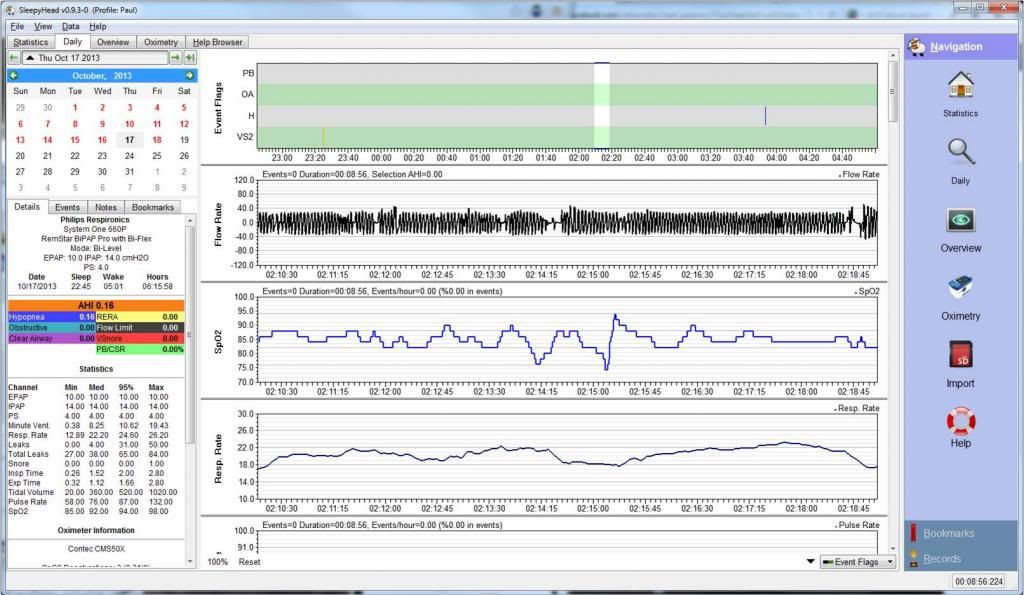pbriggs wrote:Well, for me your screen shots are not all the unusual...
here is a full night view in sleepyhead - typical for me
To me the desat is a very low number - I was told by my doctor that if I fall below 88% for more than 5 minutes that he would consider o2 while sleeping
Unless you are a large person an average minute ventilation rate of 8.25 liters per minute is a lot. You show little in the way of respiratory events. Your high volume seems to be attained through high respiratory rates.
So lets say that makes you a bit tending toward washing out much of your CO2 blood gas levels. And then lets assume that there is a bit of extra stress in your life which may account for the high respiratory rates. Both of these things tend to reduce circulation to the extremities. Your sample point is a finger tip – certainly the definition of an extremity.
What I am thinking is that these hugh oxygen saturation changes which are seen in your finger tip are very much a local event. What is true in the extreme extremity of a finger tip may not be so much true for the rest of the body. Also, it makes sense to me that the circulatory changes which would be caused by hypocapnea (low CO2 blood gas levels) and stress could account for the oxygen saturation changes in your finger tip even though I see no respiratory or heart rate change events that would account for or indicate such changes.
The scary part of this is that the brains circulatory system is also sensitive to low CO2 levels.
With what I know now I would recommend that you have your vitamin D levels checked. Those who are working with the D3 hormone (A.K.A. Vitamin D3) (e.g. Dr. Stasha Gominak, Michael F. Holick, Ph.D., M.D., Vitamin D Council) seem to be finding that the very low side of the “normal” range of 30-100 ng/L produces a range of symptoms including OSA, pain, and infection. What I appear to be finding out this fall is that more D helps normalize my breathing chemoreflexes. It seems to make it easier to breath properly night and day and to not breath too much when excited or anxious.
I think your doctor's suggestion of O2 would work for a while. It would make you breath less, at least until the chemoreflexes normalized to the new O2 levels. Then all bets are off.
Another thing that might help is EERS [1] which would help maintain CO2 levels.
I have found exercise and meditation helpful to deal with stress and help form good breathing chemoreflexes.
It would probably be wise to keep up on your antioxidant foods as they can help prevent and/or repair damage done to your cells during events.
[1]: Gilmartin G, McGeehan B, Vigneault K, Daly RW, Manento M, Weiss JW, Thomas RJ.
Treatment of positive airway pressure treatment-associated respiratory instability with enhanced expiratory rebreathing space (EERS).
Source: J Clin Sleep Med. 2010 Dec 15;6(6):529-38. Division of Pulmonary, Critical Care and Sleep Medicine, Beth Israel Deaconess Medical Center, Boston, MA, USA.
Link:
http://www.ncbi.nlm.nih.gov/pubmed/21206741













